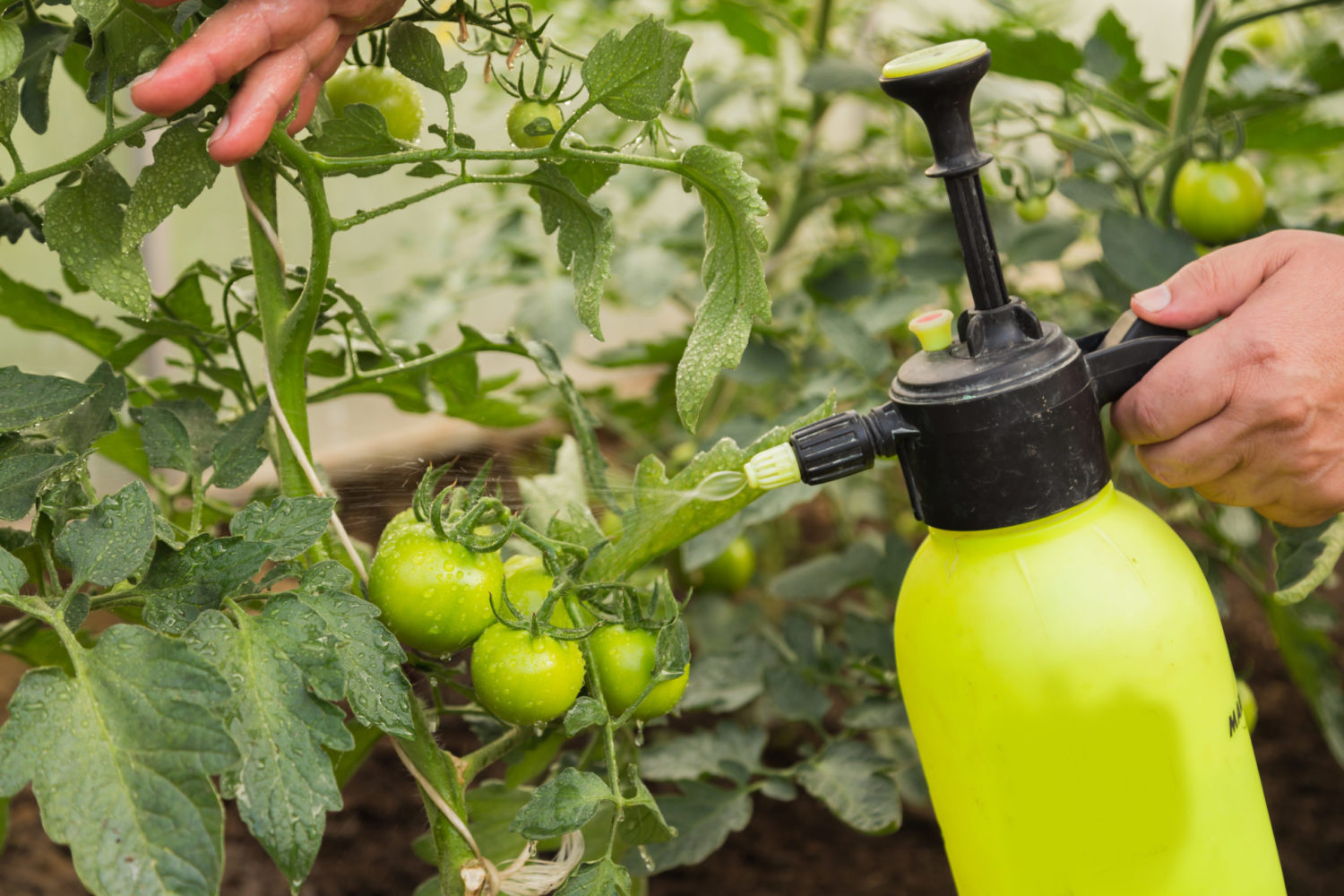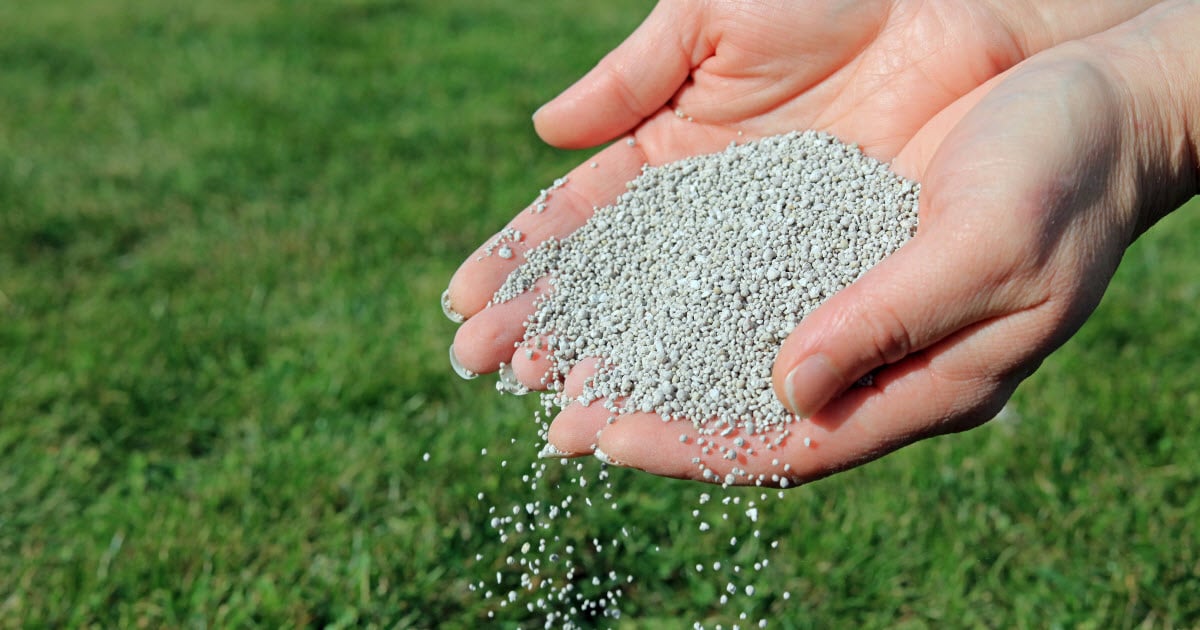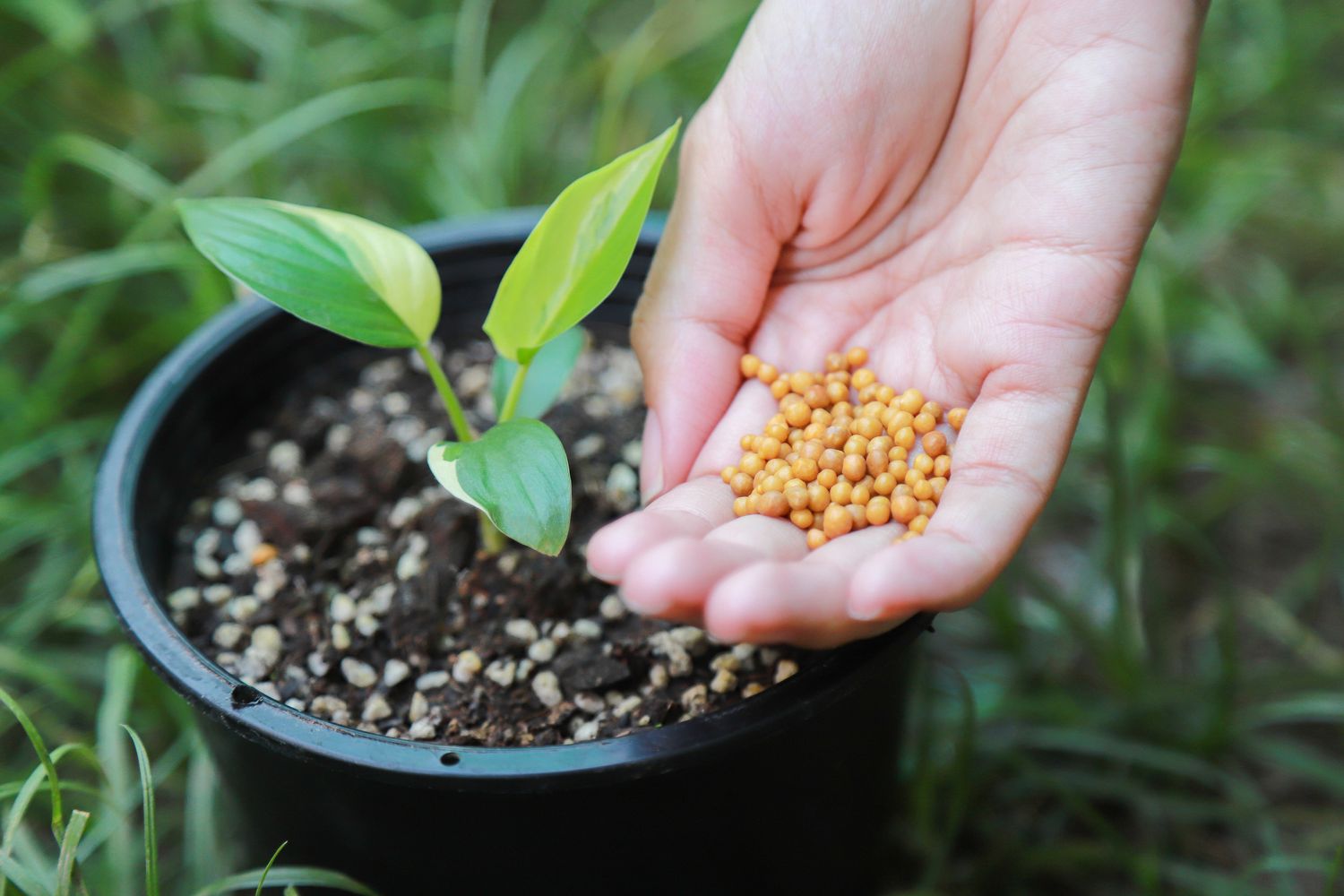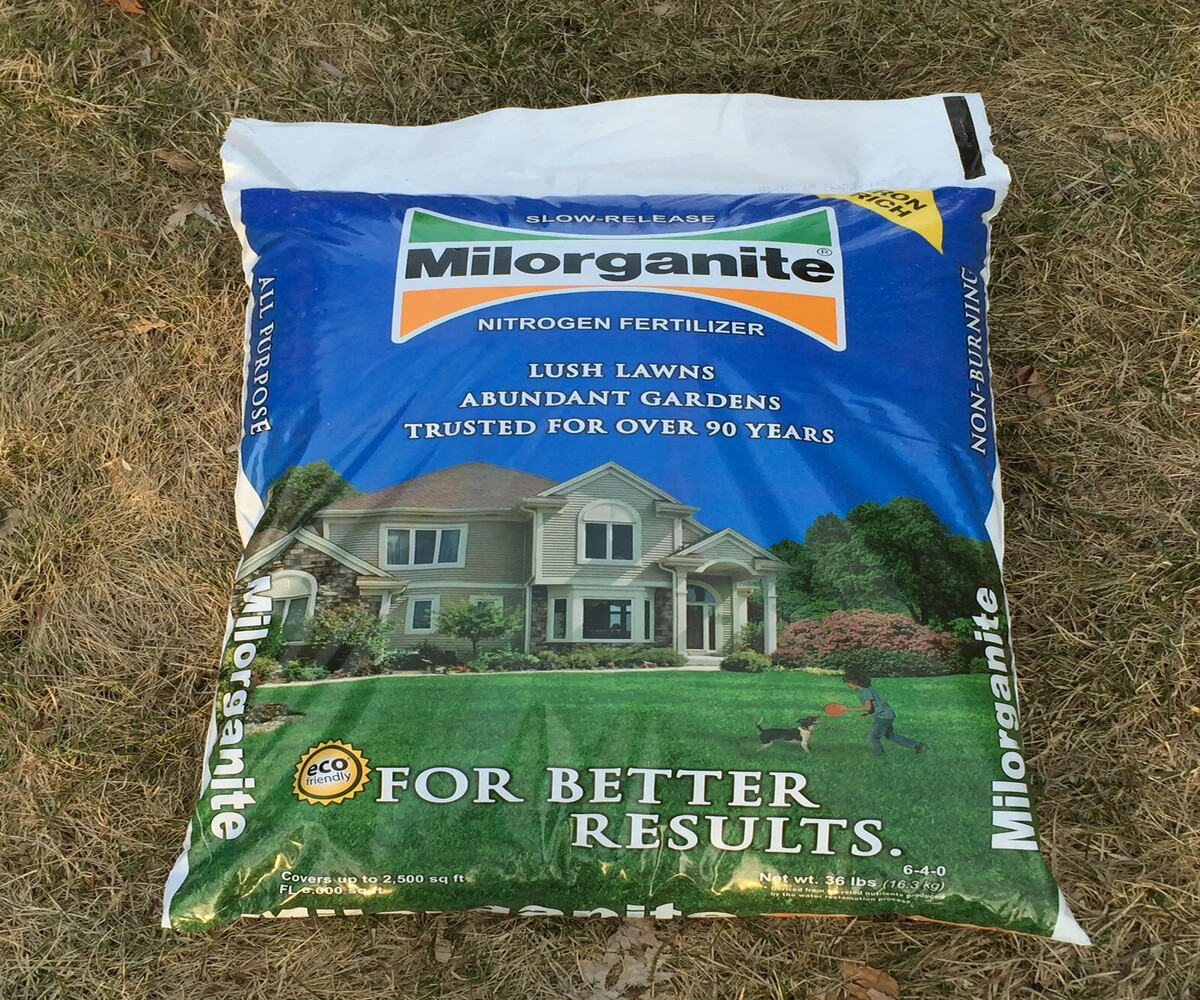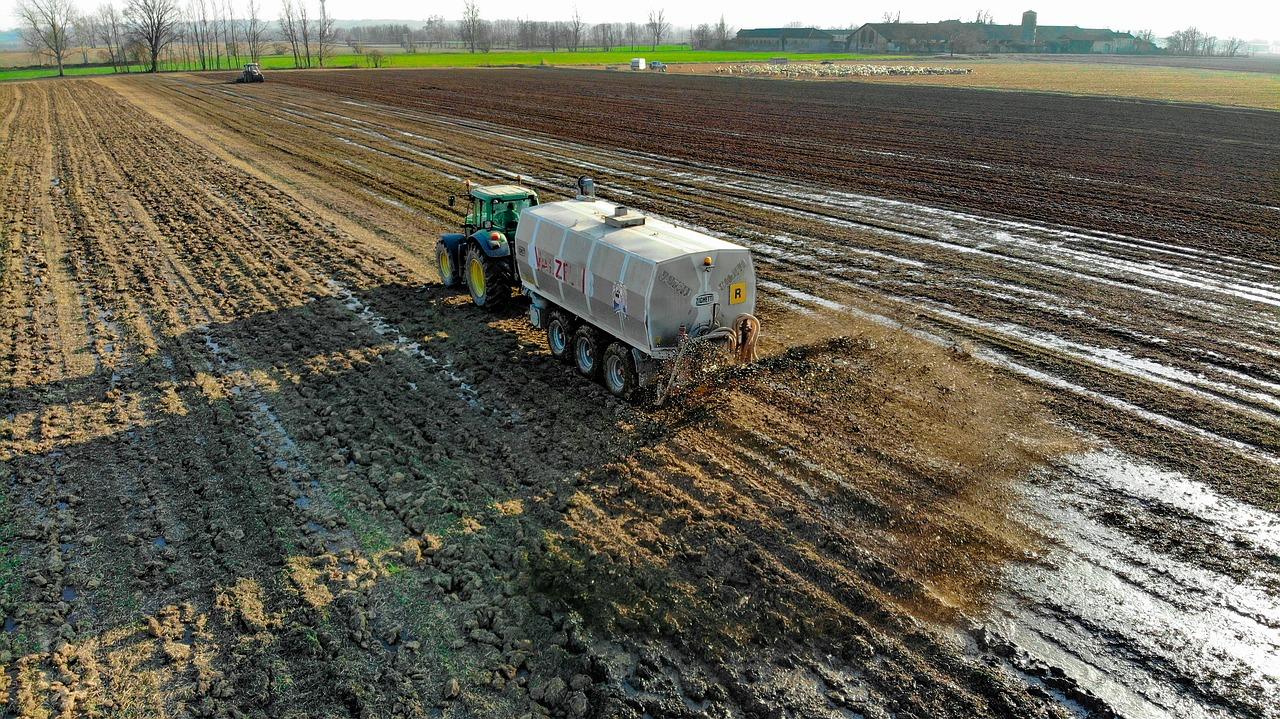Home>Gardening Tips and Tricks>Eco-Friendly Gardening>What Is A Water Soluble Fertilizer


Eco-Friendly Gardening
What Is A Water Soluble Fertilizer
Modified: January 22, 2024
Discover the benefits of eco-friendly gardening with water-soluble fertilizer. Improve plant growth, nutrient absorption, and minimize environmental impact.
(Many of the links in this article redirect to a specific reviewed product. Your purchase of these products through affiliate links helps to generate commission for Chicagolandgardening.com, at no extra cost. Learn more)
Table of Contents
- Introduction
- Definition of Water Soluble Fertilizer
- Advantages of Water Soluble Fertilizer
- Components of Water Soluble Fertilizer
- How Water Soluble Fertilizer Works
- Application Methods of Water Soluble Fertilizer
- Benefits of Using Water Soluble Fertilizer
- Potential Drawbacks of Water Soluble Fertilizer
- Common Types of Water Soluble Fertilizer
- Best Practices for Using Water Soluble Fertilizer
- Conclusion
Introduction
With the increasing emphasis on sustainability and eco-friendly practices, more and more people are turning to gardening as a way to connect with nature and reduce their environmental impact. One aspect of eco-friendly gardening that deserves attention is the use of water-soluble fertilizers.
Water-soluble fertilizers are a type of fertilizer that dissolve easily in water, allowing for efficient nutrient uptake by plants. They are commonly used in both commercial agriculture and home gardening to provide essential nutrients to plants and promote healthy growth.
Unlike traditional granular fertilizers, which can take time to break down and release their nutrients into the soil, water-soluble fertilizers provide an immediate boost of nutrients to plants. This means that plants can quickly absorb and utilize the nutrients, resulting in faster growth and improved overall health.
Water-soluble fertilizers are highly versatile and can be used in various gardening applications, including on potted plants, container gardens, vegetable gardens, and flower beds. They can be applied through irrigation systems, spray bottles, or simply by mixing them in a watering can.
In this article, we will explore the benefits and components of water-soluble fertilizers, delve into how they work, discuss different application methods, and highlight the best practices for using them in your eco-friendly gardening endeavors. By the end of this article, you will have a comprehensive understanding of water-soluble fertilizers and be equipped to incorporate them into your gardening routine.
So, if you’re ready to take your gardening to the next level and promote healthy, vibrant plants while minimizing your environmental impact, let’s dive into the world of water-soluble fertilizers.
Definition of Water Soluble Fertilizer
Water-soluble fertilizer refers to a type of fertilizer that is capable of dissolving completely in water. It is designed to provide essential nutrients to plants in a readily available form. These fertilizers are typically manufactured as powder or granules that can easily dissolve in water, allowing the nutrients to be easily absorbed by plant roots.
Unlike traditional fertilizers, which need to be broken down by soil organisms before the nutrients become available to plants, water-soluble fertilizers provide an immediate supply of nutrients. This makes them an effective solution for delivering essential elements to plants quickly and efficiently.
Water-soluble fertilizers are formulated with a balanced ratio of essential nutrients such as nitrogen (N), phosphorus (P), and potassium (K), also known as NPK. However, they can also contain other micronutrients and trace elements necessary for plant growth, such as calcium, magnesium, iron, and zinc.
One of the key advantages of water-soluble fertilizers is their ability to be customized based on the specific needs of different types of plants. By adjusting the concentration and combination of nutrients in the fertilizer solution, gardeners can ensure that their plants receive the optimal amount of nutrients for their growth stage.
Water-soluble fertilizers are commonly used in both commercial agriculture and home gardening. They are particularly beneficial in situations where plants require a quick nutrient boost, such as during the flowering or fruiting stage, or when plants show signs of nutrient deficiency.
Overall, water-soluble fertilizers offer a convenient and effective way to deliver essential nutrients to plants. Their ability to dissolve in water allows for easy application through various methods, ensuring that plants receive the nutrients they need for healthy growth and development.
Advantages of Water Soluble Fertilizer
Water-soluble fertilizers offer several advantages that make them a popular choice among gardeners and farmers alike. Let’s explore some of the key benefits:
- Quick and Efficient Nutrient Uptake: One of the major advantages of water-soluble fertilizers is their ability to provide plants with an immediate nutrient boost. As the fertilizer dissolves in water, the nutrients become readily available for plant uptake. This allows plants to quickly absorb the necessary nutrients, resulting in faster growth and improved overall health.
- Customizable Formulations: Water-soluble fertilizers can be tailored to meet the specific nutritional requirements of different plants and growth stages. Gardeners have the flexibility to adjust the concentration and combination of nutrients in the fertilizer solution, ensuring that plants receive the optimal amount of nutrients for their specific needs. This customization allows for precise fertilization and helps prevent nutrient deficiencies or excesses.
- Even Distribution of Nutrients: When water-soluble fertilizers are applied, they evenly distribute the nutrients throughout the soil or growing medium. This ensures that all plants in the area receive an equal and consistent supply of nutrients, minimizing the risk of nutrient imbalances or uneven growth.
- Rapid Response: Water-soluble fertilizers are quickly absorbed by plant roots, resulting in a rapid response in terms of growth and overall plant health. This can be particularly beneficial when plants require a quick nutrient boost or when addressing nutrient deficiencies. Gardeners can see visible improvements in plant vigor and productivity in a relatively short period.
- Easy Application: Water-soluble fertilizers can be applied using various methods, depending on the gardening setup. They can be dissolved in water and applied through irrigation systems, sprayed onto foliage, or simply mixed in a watering can for manual application. This versatility makes them suitable for a wide range of gardening practices, including container gardening, hydroponics, and greenhouse cultivation.
Overall, the advantages of water-soluble fertilizers make them a valuable tool for promoting healthy plant growth, optimizing nutrient uptake, and ensuring efficient nutrient distribution. By harnessing their customizable formulations and convenient application methods, gardeners can enhance the productivity and vitality of their plants.
Components of Water Soluble Fertilizer
Water-soluble fertilizers consist of various components that provide essential nutrients to plants. These components work together to supply the necessary elements for plant growth and development. Let’s take a closer look at the key components of water-soluble fertilizers:
- Nitrogen (N): Nitrogen is an essential nutrient for plant growth and is responsible for promoting lush green foliage and stimulating vegetative growth. It plays a vital role in chlorophyll production, protein synthesis, and enzyme activity. Nitrogen is often the most prominent component in water-soluble fertilizers and is represented by the first number in the NPK formulation.
- Phosphorus (P): Phosphorus is crucial for root development, flowering, and fruiting in plants. It aids in energy transfer, DNA synthesis, and the formation of carbohydrates. Phosphorus is represented by the second number in the NPK formulation and is an important component of water-soluble fertilizers.
- Potassium (K): Potassium is involved in various physiological processes within plants, including photosynthesis, water regulation, and nutrient uptake. It contributes to overall plant vigor, disease resistance, and the development of strong stems and roots. Potassium is represented by the third number in the NPK formulation and is an essential component of water-soluble fertilizers.
- Micronutrients: Along with the primary nutrients mentioned above, water-soluble fertilizers may also contain micronutrients such as calcium, magnesium, iron, zinc, manganese, and copper. These micronutrients are required by plants in smaller quantities but are equally important for their overall health and development. Micronutrients are crucial for enzyme activity, chlorophyll synthesis, and proper functioning of metabolic processes in plants.
- pH Modifiers: Water-soluble fertilizers often include pH modifiers to adjust the acidity or alkalinity of the fertilizer solution. The pH level of the fertilizer solution can affect nutrient availability and uptake by plants. pH modifiers help ensure that the fertilizer solution remains within the optimal pH range for efficient nutrient absorption.
- Additives: Some water-soluble fertilizers may also contain additives like humic acid, seaweed extracts, or beneficial microbes. These additives can enhance soil fertility, improve nutrient uptake, and promote overall plant health. They can also help stimulate root growth, boost stress tolerance, and increase plant resistance to diseases and pests.
The specific components and their ratios in water-soluble fertilizers may vary depending on the brand and formulation. It is important for gardeners to carefully read and understand the label instructions to ensure that the fertilizer meets the specific nutrient requirements of their plants.
By incorporating water-soluble fertilizers with the appropriate components, gardeners can provide their plants with a well-rounded nutrient supply, resulting in healthy growth, vibrant blooms, and bountiful harvests.
How Water Soluble Fertilizer Works
Water-soluble fertilizers work by providing readily available nutrients to plants in a form that can be easily absorbed through the roots. When dissolved in water, these fertilizers release essential nutrients that plants need for proper growth and development. Let’s explore how water-soluble fertilizers work:
1. Dissolution: Water-soluble fertilizers are designed to dissolve quickly and completely in water. They usually come in the form of powders or granules that readily dissolve when mixed with water. This dissolution process allows the nutrients to become readily available for plant uptake.
2. Ionization: Once dissolved, the components of water-soluble fertilizers ionize, meaning they separate into charged particles or ions. These ions include the essential nutrients such as nitrogen (N), phosphorus (P), potassium (K), and micronutrients. The ions are in a form that plants can readily absorb through their roots.
3. Root Uptake: When plants are watered with the fertilizer solution, the dissolved nutrients are taken up by the plant roots. This uptake occurs through a process called active transport, whereby plant roots selectively absorb the ions needed for growth and development.
4. Nutrient Distribution: Once inside the plant, the nutrients are transported to different parts of the plant through the xylem and phloem vessels. The nutrients are then used for various metabolic processes, including photosynthesis, protein synthesis, and enzyme activity.
5. Nutrient Utilization: Plants utilize the absorbed nutrients to support their growth and development. Nitrogen (N) promotes leaf and stem growth, phosphorus (P) aids in root development and flower production, and potassium (K) contributes to overall plant health and disease resistance. Micronutrients play essential roles in various enzymatic reactions and important physiological functions within the plant.
6. Continuous Nutrient Supply: Water-soluble fertilizers provide a continuous supply of nutrients to plants, ensuring that they have access to the essential elements they need throughout their growing period. With regular applications, the plant’s nutrient requirements are met, resulting in healthy growth, improved flowering, and higher yields.
It’s important to note that water-soluble fertilizers can be easily washed away by excessive watering or heavy rainfall. Therefore, it’s advisable to follow proper application guidelines and adjust the fertilizer application rates based on plant needs and environmental conditions.
By understanding how water-soluble fertilizers work, gardeners can ensure that their plants receive the necessary nutrients for optimal growth, leading to healthy, vibrant, and productive plants.
Application Methods of Water Soluble Fertilizer
Water-soluble fertilizers can be applied through various methods, allowing gardeners to select the most suitable option based on their gardening setup and plants’ needs. Let’s explore some common application methods:
- Irrigation Systems: Many gardeners prefer to apply water-soluble fertilizers through irrigation systems, such as drip irrigation or sprinklers. This method ensures that plants receive a consistent supply of nutrients directly to their root zone. Fertilizers can be added to the irrigation water, ensuring even distribution throughout the garden or specific areas.
- Foliar Spray: Water-soluble fertilizers can be applied as a foliar spray, where the fertilizer solution is sprayed directly onto the leaves and stems of plants. This method allows plants to absorb nutrients through their foliage, bypassing the need for root uptake. Foliar sprays are particularly useful when plants have nutrient deficiencies or when immediate nutrient uptake is necessary.
- Watering Can: For smaller-scale gardening, a watering can is a practical and efficient tool for applying water-soluble fertilizers. Simply dissolve the fertilizer in water according to the package instructions and use the watering can to evenly distribute the solution around the base of the plants. This method is suitable for potted plants, container gardens, or plants in raised beds.
- Hydroponics: Water-soluble fertilizers are frequently used in hydroponic systems, where plants are grown in a soilless medium and receive all their nutrients from the nutrient solution. In this method, the fertilizer solution is mixed according to the specific nutrient requirements of the plants, and the solution is continuously circulated to provide a constant supply of nutrients.
- Greenhouse Applications: Greenhouse gardening often utilizes water-soluble fertilizers for their versatility and ease of use. Fertilizer injectors can be used to add the fertilizer solution directly to the irrigation system, ensuring that all greenhouse plants receive the necessary nutrients regularly.
Whichever method you choose, it’s essential to follow the recommended fertilizer dosage and application instructions. Applying too much fertilizer can lead to nutrient imbalances, while underapplication may result in insufficient nutrients for optimal plant growth.
Additionally, it’s important to consider environmental conditions, such as temperature and moisture levels, as they can affect the absorption rate of fertilizers. Applying fertilizers during cooler parts of the day or when plants are actively growing can enhance nutrient uptake and minimize the risk of fertilizer burn.
By selecting the appropriate application method and properly following the instructions, gardeners can effectively deliver the necessary nutrients to their plants, supporting healthy growth, vibrant blooms, and abundant harvests.
Benefits of Using Water Soluble Fertilizer
Using water-soluble fertilizers in your gardening practices offers a multitude of benefits that can contribute to the overall health and productivity of your plants. Let’s explore some of the key advantages of using water-soluble fertilizer:
- Immediate Nutrient Availability: Water-soluble fertilizers provide an instant supply of nutrients to plants. As they dissolve in water, the nutrients become readily available for uptake by plant roots. This ensures that plants receive essential elements quickly, resulting in faster growth rates and improved overall health.
- Customizable Nutrient Formulations: One of the major advantages of water-soluble fertilizers is that they can be customized based on the specific nutrient needs of different plants and growth stages. By adjusting the concentration and combination of nutrients in the fertilizer solution, gardeners have the ability to optimize nutrient uptake and prevent nutrient deficiencies or excesses.
- Even Nutrient Distribution: Water-soluble fertilizers, when applied correctly, ensure even distribution of nutrients throughout the soil or growing medium. This results in consistent nutrient availability for all plants, reducing the risk of nutrient imbalances and promoting balanced growth across the garden or planting area.
- Precise Nutrient Delivery: Water-soluble fertilizers provide precise control over the dosage and application of nutrients. Gardeners can easily measure and mix the fertilizer according to the specific requirements of their plants, ensuring that they receive the appropriate amount of nutrients for optimal growth and development.
- Convenience and Versatility: Water-soluble fertilizers offer a high level of convenience and versatility. They can be applied through various methods, such as irrigation systems, foliar sprays, or manual watering cans, making them suitable for different gardening setups. This versatility allows gardeners to use water-soluble fertilizers in a wide range of applications, including container gardening, vegetable gardens, ornamental flower beds, and more.
- Rapid Plant Response: Due to their immediate nutrient availability, water-soluble fertilizers often lead to a rapid response in plant growth and development. Plants can quickly absorb the nutrients, resulting in improved vigor, increased flower production, and higher yields. This makes water-soluble fertilizers particularly beneficial during critical growth stages or when plants require a quick nutrient boost.
It is important to note that while water-soluble fertilizers offer numerous benefits, they should be used in conjunction with good gardening practices. This includes proper watering, appropriate timing of applications, and soil testing to ensure the fertilizers are used effectively and sustainably.
By harnessing the benefits of water-soluble fertilizers, gardeners can provide their plants with the necessary nutrients in a convenient and controlled manner, resulting in healthier, more vibrant, and productive gardens.
Potential Drawbacks of Water Soluble Fertilizer
While water-soluble fertilizers offer many benefits, it is important to consider their potential drawbacks as well. Understanding these drawbacks can help gardeners make informed decisions and effectively manage the use of water-soluble fertilizers. Let’s explore some of the potential drawbacks:
- Leaching and Runoff: One of the main concerns with water-soluble fertilizers is the risk of leaching and runoff. These fertilizers can be easily washed away by heavy rainfall or excessive watering. This not only wastes the nutrients but can also lead to environmental issues, such as pollution of water bodies and contamination of groundwater. It is crucial to use water-soluble fertilizers judiciously and follow proper application guidelines to minimize these risks.
- Frequency of Application: Unlike slow-release fertilizers that provide a continuous supply of nutrients over an extended period, water-soluble fertilizers have a shorter lifespan. This means that more frequent applications may be required to maintain optimal nutrient levels for plants. This can be time-consuming and may also result in increased costs for gardeners who need large quantities of fertilizer.
- Potential for Nutrient Imbalances: Improper application or overuse of water-soluble fertilizers can lead to nutrient imbalances in the soil. This can be detrimental to plant health and may result in nutrient deficiencies or toxicities. It is important to carefully read and follow the package instructions to ensure that the fertilizer is applied at the appropriate rate and frequency for the specific plants being grown.
- Fertility Buildup: Continuous use of water-soluble fertilizers without proper monitoring of nutrient levels can result in fertility buildup in the soil. Excessive accumulation of certain nutrients can disrupt the nutrient balance, leading to nutrient imbalances and potential harm to plants. Regular soil testing is essential to monitor nutrient levels and adjust fertilizer applications accordingly.
- Cost: Water-soluble fertilizers can be more expensive compared to other types of fertilizers, especially when frequent applications are required. This can be a significant factor for large-scale gardening or agricultural operations. It is important to consider the overall cost and benefits of using water-soluble fertilizers in relation to the specific needs and goals of your garden.
While these potential drawbacks exist, they can be managed by using water-soluble fertilizers responsibly and following best practices. Monitoring nutrient levels, adjusting application rates, and incorporating other sustainable gardening practices can help mitigate potential issues and optimize the benefits of using water-soluble fertilizers.
By being aware of the potential drawbacks and taking proactive measures, gardeners can make informed decisions and ensure that the use of water-soluble fertilizers is both effective and environmentally responsible.
Common Types of Water Soluble Fertilizer
Water-soluble fertilizers come in various formulations, each tailored to meet specific plant nutrient requirements and gardening needs. Here are some common types of water-soluble fertilizers:
- All-Purpose Fertilizer: All-purpose water-soluble fertilizers contain a balanced ratio of nitrogen (N), phosphorus (P), and potassium (K) – the three primary nutrients essential for plant growth. These fertilizers are versatile and suitable for a wide range of plants, making them a popular choice for general gardening and container plants.
- Bloom Boosters: Bloom booster water-soluble fertilizers are specifically formulated to enhance flower and fruit production. They are high in phosphorus (P) content, which promotes robust flowering, better fruit set, and increased yield. Bloom boosters are ideal for flowering plants, vegetables, and fruiting trees.
- Foliage Fertilizers: Foliage fertilizer formulations are high in nitrogen (N), which is essential for promoting lush green foliage growth. They are commonly used for plants that primarily focus on leafy growth, such as herbs, leafy vegetables, and ornamental plants with vibrant foliage.
- Low Nitrogen Fertilizers: Low nitrogen water-soluble fertilizers have a reduced nitrogen content compared to all-purpose fertilizers. They are beneficial for certain plants, such as fruit trees or woody ornamentals, that require balanced nutrition without excessive vegetative growth.
- Specialty Formulations: Some water-soluble fertilizers are tailored for specific plant groups or gardening practices. For example, acid-loving plants such as azaleas and blueberries may benefit from acid-formulated water-soluble fertilizers. There are also formulations designed for hydroponic systems, orchids, citrus trees, and other specialty plants.
It is important to consider the specific nutrient needs of your plants before selecting a water-soluble fertilizer. Carefully read the label and product descriptions to ensure that the chosen fertilizer matches the requirements of your plants. Additionally, consider factors such as the NPK ratio, micronutrient content, and any additional beneficial components or additives contained in the fertilizer.
Remember that proper application and dosage are key to maximizing the effectiveness of any type of water-soluble fertilizer. Following the instructions on the package and adjusting the dosage based on the specific needs of your plants will help provide the right nutrients in the right amounts for healthy growth and optimal results.
By selecting the appropriate type of water-soluble fertilizer for your plants’ needs, you can ensure that they receive the essential nutrients necessary for robust growth, abundant blooms, and bountiful harvests.
Best Practices for Using Water Soluble Fertilizer
To maximize the effectiveness of water-soluble fertilizers and ensure optimal plant growth and health, it is important to follow some best practices. Here are some key guidelines to consider when using water-soluble fertilizer:
- Read and Follow Instructions: Carefully read and follow the instructions provided on the fertilizer packaging. This includes dosage recommendations, mixing ratios, and application frequency. Each brand and product may have specific guidelines and it is important to adhere to them for proper and effective use.
- Pre-Water Your Plants: Before applying water-soluble fertilizer, it is recommended to water your plants thoroughly. This ensures that the soil is adequately moist before the fertilizer is introduced. This step helps prevent fertilizer burn and potential damage to plant roots.
- Use Proper Dilution Rates: Ensure that you mix the water-soluble fertilizer at the recommended dilution rate. Using a higher concentration than specified can lead to nutrient imbalances, while using a lower concentration may not provide sufficient nutrients. Follow the instructions on the package to achieve the correct dilution ratio.
- Avoid Overfertilization: Applying excessive amounts of water-soluble fertilizer can lead to nutrient imbalances, fertilizer burn, and negative impacts on plant health. It is important to follow the recommended dosage and apply fertilizer in moderation. Remember, more is not always better when it comes to fertilizers.
- Apply During Active Growth: Apply water-soluble fertilizer during the active growth phase of plants. This is when plants have the highest nutrient demand and can effectively utilize the applied fertilizers. Applying fertilizer during periods of dormancy or when plants are stressed may not yield optimal results.
- Monitor Soil Moisture: Regularly monitor soil moisture levels to ensure that the plants are adequately hydrated. Water-soluble fertilizers are most effective when applied to moist soil as it helps nutrients reach the root zone efficiently. Avoid applying fertilizer to dry or waterlogged soil.
- Avoid Foliar Application in Direct Sunlight: If using foliar application with water-soluble fertilizer, avoid spraying foliage during the hottest part of the day or when the sun is directly shining on the plants. This helps minimize the risk of leaf burn, as the fertilizer solution may magnify the sun’s intensity and potentially damage the leaves.
Remember to consider other aspects of plant care, such as sunlight exposure, watering, and pest control, along with water-soluble fertilizer applications. Maintaining a balanced and holistic approach to gardening will result in healthier, more resilient plants.
By following these best practices, you can ensure that water-soluble fertilizers are used effectively, providing your plants with the necessary nutrients for vigorous growth, abundant blooms, and productive harvests.
Conclusion
Water-soluble fertilizers are a valuable tool for eco-friendly gardeners looking to provide their plants with a readily available supply of essential nutrients. Their quick nutrient absorption, customizable formulations, and versatile applications make them a popular choice for both commercial agriculture and home gardening.
By using water-soluble fertilizers, gardeners can enjoy several benefits. These include immediate nutrient availability, precise nutrient control, even distribution, and rapid plant response. Water-soluble fertilizers also offer convenience and versatility with different application methods to suit various gardening setups.
However, it is essential to be mindful of potential drawbacks associated with water-soluble fertilizers. Leaching and runoff, the need for frequent applications, and the potential for nutrient imbalances require careful management and responsible usage to minimize environmental impacts and ensure plant health.
To make the most of water-soluble fertilizers, gardeners should follow best practices, such as reading and adhering to instructions, pre-watering plants, using proper dilution rates, avoiding overfertilization, and applying during active growth periods. Regularly monitoring soil moisture and being mindful of when and how foliar applications are made are also crucial for successful fertilizer use.
Ultimately, water-soluble fertilizers provide a convenient, customizable, and efficient way to nourish your plants, promoting healthy growth, vibrant blooms, and abundant harvests. By incorporating these fertilizers judiciously into your gardening routine and implementing sustainable practices, you can create a thriving and eco-friendly garden.

